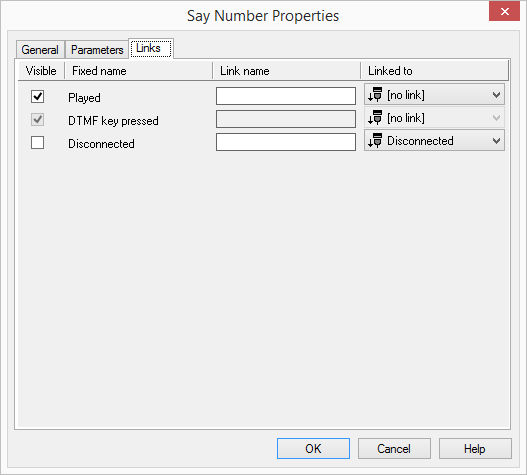2.4.11.5 Say Number

With this block, you can have a string (0-9,*,#) played for the caller.
You can enter this announcement directly or define it using a variable or system function.
This action will be terminated, if
Under "Properties", all three tabs "General", "Parameters" and "Connections" tabs are available for this block.
This is how you define the parameters for “Say Number”

.

If a variable is used, you should have set it previously using the block “Set Variable”. If the variable has not been set, i.e. the string is empty, no announcement will be played.
For the string to be output, only DTMF characters (0-9,*,#) are announced here. If the string contains letters or other characters, they will be skipped in the output.
Links
On this tab you will find all outputs associated with this block. The outputs are described as follows:

Output | Explanation |
|---|---|
Played | This exit is chosen if the string has been played. |
Get DTMF Char | This exit is selected if a DTMF character is detected during the announcement. |
Disconnected | This exit is selected if the connection is disconnected. |
In the first column "Visible", you can define whether each output should be shown in the script window.
The "Visible" column is only used to define the visibility of the links in the script window. This setting helps to maintain the clarity of the script. You cannot remove outputs, i.e. the connections must be kept, otherwise an error will occur in the script.
The second column "Default" contains the default name of the output. This provides information about events during the execution of a block so that additional appropriate connections can be created. This fixed name cannot be changed. You can assign your own identifying names to the various contact surfaces in the column "Link name". This name will later appear in the block in the grid interface.
In the last column "Linked to" you see which block input this output is connected to. Here you have the option of selecting a link from a select list, which contains all available blocks.
